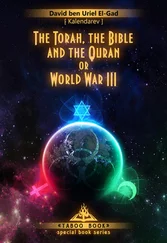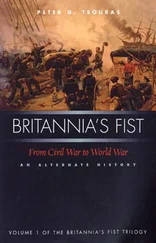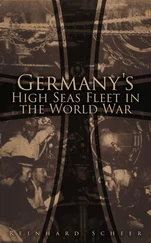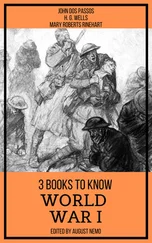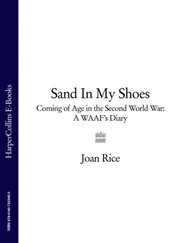24 Jun: War Cabinet Agendum 150/1940 ‘Production orders for AFVs’ requests 859 tanks with delivery of 70 per month beginning in September or October 1940. No mention is made of the request for tanks in Agendum 141.
25 Jun: War Cabinet Minute 363 approves Agendum 141 as an objective for the Director-General of Munitions.
2 Jul: War Cabinet Minute 375 considers Agendum 150, but does not directly approve the production of tanks. Instead, it requests more information on plans for British tanks and on effect of tank production on other munitions.
13 Aug: Minister for the Army, Geoffrey Street, killed in air crash.
Sept: Committee formed to prepare specifications for Australian cruiser.
Dec: UK tank expert, Colonel Watson, reaches Australia via USA.
1941
Jan: Director-General of Munitions states that design should be possible in six months.
8 Jan: War Cabinet Minute 689 records statement by DCGS that design of tank had been decided.
18 Feb: War Cabinet Minute 826: type of engine not yet decided; could be either three Cadillac Model 75 V8 engines or a Guiberson 400 hp radial diesel.
20 Feb: Advisory War Council Minute records that the specification for armour plate and fabrication are being investigated.
30 Apr: Conference in Melbourne: Lewis and Hartnett state very real production problems and emphasise that design is not yet finalised.
May: Director-General of Munitions’ Report 10 for April 1941 notes that design of the Australian cruiser is still under way.
16 May: Letter from Hartnett to Lewis: experiments needed for casting hull; hold-ups with gearbox and final drive.
4 Jun: Suggestion for a simpler AC2 to complement AC1.
10 Jul: War Cabinet Minute 1191 approves commencement of production of AC2 and continued production of AC1.
23 Jul: General Staff proposes that production of AC2 be halted because of deliveries of Grant tanks from the USA. Cabinet does not agree and authorises continued production of AC2.
26 Sep: CGS proposes scrapping of AC2 program.
9 Oct: Minister for the Army approves scrapping of AC2 program.
24 Nov: CGS repeats statement that AC2 is useless for Army needs.
30 Nov: Current tank status: 1004 tanks needed; available 10 Stuarts and 8 obsolete British light tanks.
7 Dec: PEARL HARBOR: JAPAN AT WAR WITH AUSTRALIA.
1942
7 Jan: Letter from Spender to PM: should local production continue, or should pressure be put on UK and USA to supply tanks?
31 Jan: Notification of supply of 325 tanks in total from UK and USA.
5 Mar: Supply upgraded to 1105 in total.
8 Apr: Spender to Blamey: AC1 broke down in production trial; should production continue?
17 Apr: Blamey: Yes, AC1 outstandingly successful.
22 Apr: Blamey tells PM same story.
30 Apr: PM agrees to continue tank production program.
27 May: Production of 400 AC 3s (armed with 25-pdr to meet German tanks) approved; production of AC1 to meet Japanese tanks to continue.
11 Jun: Spender asks Advisory War Council meeting whether local tank production should continue.
18 Jun: Blamey endorses continued production of AC3, calls it a first-class modern tank.
9 Jul: War Cabinet Minute 2255 confirms local production to be pursued with utmost vigour.
15 Aug: Question asked at PM’s War Conference: ‘Should local production continue?’ Answer: ‘Yes.’
28 Aug: MacArthur ‘heartily agrees that Australia should have a tank production program.’
30 Sep: Advice received that Australian tank program is being referred to the US Chiefs of Staff for analysis and decision.
28 Oct: US Department of Ordnance recommends that Australian tank production should cease and Australia should use tanks standardised in US and British Armies.
10 Dec: US Munitions Assignment Board decrees that delivery of tank components to Australia will be sufficient for 20 tanks per month only.
1943
9 Feb: Current stock of serviceable tanks 750 US and 300 British. CGS maintains still necessary to continue local production.
Mar: US Lend-Lease Administration sends Colonel Green to assess Australian tank production.
17 May: Green presents report advocating cessation of tank production except for a minimum program to prove the design of the AC4.
13 Jul: War Cabinet agrees to the cessation of the tank production program (Minute 2979).
14 Aug: MacArthur tells PM that cessation of tank production is wise.
26 Aug: Proposal for disposal of tanks and components at varying stages of manufacture.
1. Harry Gordon, An Eyewitness History of Australia, Penguin, Melbourne, 1976, p. 115. ‘Australian troops arrive in the Sudan to fight the Saracens’ was the title of an article by Joe Melvin published in the Melbourne Argus on 5 May 1885. It describes the arrival of the force at Suakin, and has a splendid picture of the NSW contingent embarking in Sydney.
2. PRO WO 279/74 Report on the Staff Conference held at the Staff College Camberley, 9–11 Jan 1933.
3. David French, Raising Churchill’s Army, Oxford University Press, USA, 2001, p. 18.
4. Ibid., p. 176.
5. The Junkers 87 Sturzkampfflugzeug, diving fighter plane, abbreviated to Stuka, made a screaming noise when diving on its target that was so blood-curdling as to paralyse all but the bravest.
6. Peter Beale, The Great Mistake, The History Press, UK, 2004, p. 23. The auftragstaktik implied at least three things: the junior commander, who could be an NCO, takes over command automatically if his superior is disabled; he is fully trained to do so; and he always knows what his superior’s mission is.
7. The origins of the tank have been discussed in many books. A good brief synopsis is contained in the contribution by David Fletcher to J.P. Harris and F.N. Toase, Armoured Warfare, Batsford, London, 1990, pp. 5–9. A comment on the parentage of the tank is also made in Peter Beale’s Infighter: 9th Battalion Tank Corps 1916–1919, privately published, Valentine, NSW, 2004: ‘There are some interesting points to consider in the development of the tank in 1915 and 1916. Several people can lay claim to a share of the parentage of the tank, including Winston Churchill, William Tritton, Walter Wilson, Eustace Tennyson d’Eyncourt, Murray Sueter, Albert Stern, and Ernest Swinton. The technical problems were triumphantly overcome by Tritton and Wilson, and all the others had some part to play in producing the tanks and working out how best to use them. But it has to be acknowledged that without the drive and enthusiasm of Winston Churchill progress would have been much slower, and Britain would have been deprived of an important weapon at a critical time.’
8. David Fletcher, The British Tanks 1915-19, Crowood Press, Marlborough, 2001, pp. 47–48.
9. David Fletcher, Tanks and Trenches, Sutton Publishing, UK, 2009.
10. Especially the Australians at First Bullecourt. For more detail, see Chapter 2.
11. The battle of Cambrai is described in every history of the employment of tanks. A reference of particular interest is: ‘Preliminary Report on Tank Corps Operations 20 Nov – 1 Dec 1917’, undated, BCII/12 Fuller Papers, Liddell Hart Centre for Military Archives, Kings College London (LHCMA).
12. The period 8 August to 11 November 1918 is known as ‘the last Hundred Days’ or ‘the Hundred Days’. It was, in fact, only ninety-six days.
13. Clough Williams-Ellis, The Tank Corps, George Newnes, London, 1919, pp. 202–206.
14. Kiggell to Robertson, ROBERTSON 1/14/40, Robertson Papers, LHMCA.
15. Launcelot Kiggell, Note on the use of tanks, PRO WO 158/832.
16. J.F.C. Fuller, Memoirs of an unconventional soldier, Nicholson & Watson, London, 1936, p. 97.
Читать дальше

